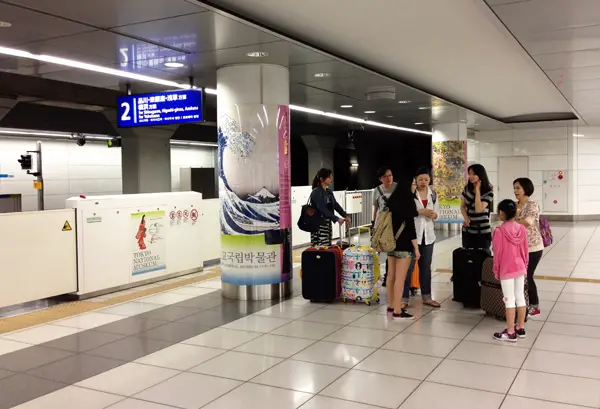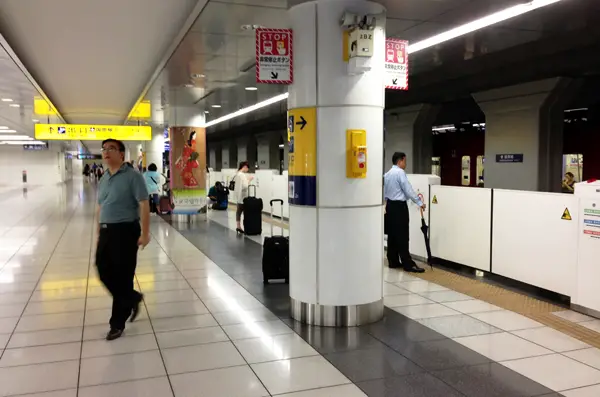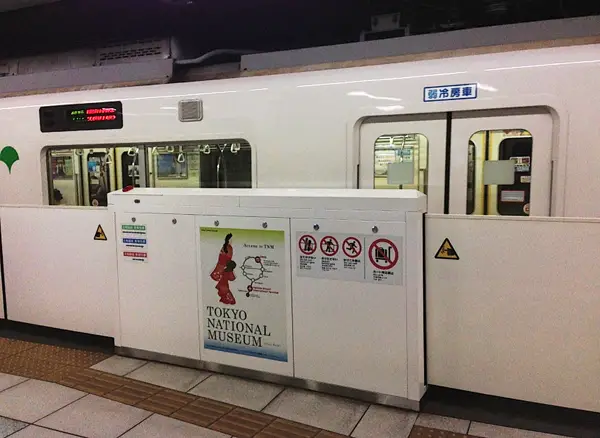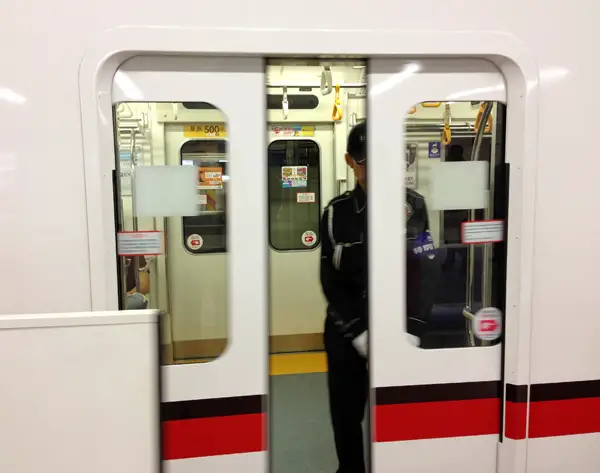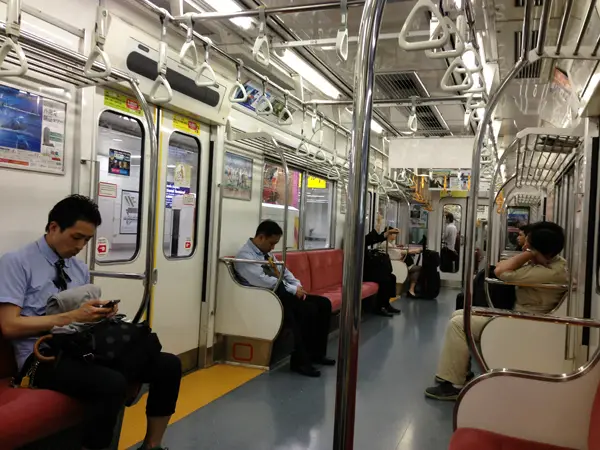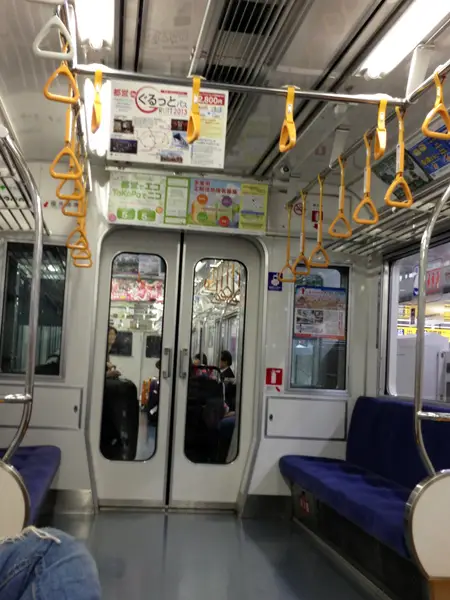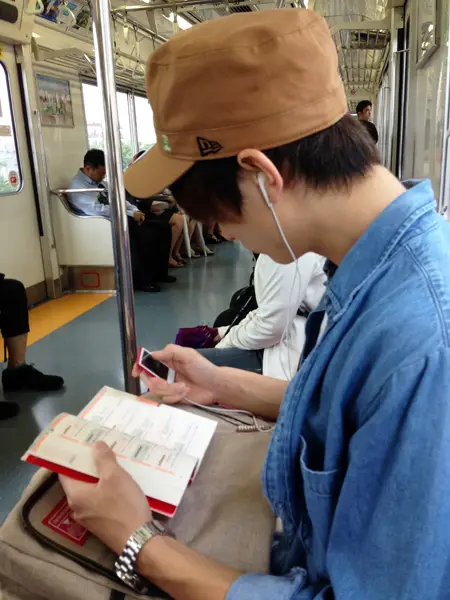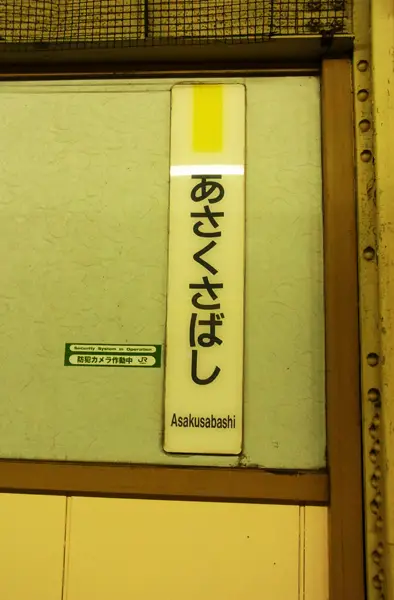There are may ways to get from Haneda Airport to downtown Tokyo, ranging from very expensive taxis to the more affordable limousine bus, the monorail and the good old train. Your choice of transportation will depend mainly on your destination and your budget.
While the taxi can take you anywhere you want to go, be ready to fork out between 4000 and 10000 yen, depending how far you need to go. This is quite expensive, especially for a budget traveler and, unless “someone else” is paying for the ride, it’s better to avoid taxis. Also, there’s a surcharge of 20% at night, which can easily put you back a few more hundred yen.
The limousine bus has direct connections to major hotels in Tokyo and it also goes to neighbouring provinces. If you’ve book your stay with a major hotel, then getting there by bus might be a good idea, especially that you can get a combined bus and metro discount ticket which you can use for one day on all underground trains that run with Tokyo Metro (but not the Toei subway lines). The ride from Haneda Airport to donwntown Tokyo takes between 30 and 80 minutes and can cost 500 to 2000 yen. Obviously, the father you go, the more you pay.
Taking the Tokyo Monorail is a good idea if your hotel is near Hamamatsucho Station on the JR Yamanote Line. The great thing about public transportation in Japan is that tourists can get various discount packages; you can ride the Tokyo Monorail on a Suica & Monorail discount ticket. With this card, you can get a one-way or return trip on the monorail and a Suica prepaid card which can be used on JR trains travelling through the Greater Tokyo area (which consists of the Kanto region and Yamanashi Prefecture), plus the Niigata and Sendai regions. If you plan to travel in any of these regions, a Suica card can spare you a few yen and also relieve you of the trouble of having to buy tickets at the station. Instead, just walk in, swipe your card and get on the train. The ride to Hamamatsucho Station takes 15 minutes and costs 470 yen.
And there’s the JR train running on the Keikyu Railways which basically connects Haneda Airport with Shinagawa Station, one of Tokyo’s busiest stations, a tourist attraction in its own right. Also, the train goes along the Asakusa Subway Lines and then on to Yokohama and Kanagawa Prefecture. To get to Shinagawa Station you’ll have to pay 400 yen and, 15 minutes after your embarkation, you’ll arrive at your destination. It cost more to reach other station on the Asakusa line but, due to its reach, the Keikyu Railways is one of the most used means of transportation out of Haneda.
The JR Pass can be used with both Tokyo Monorail and the Keikyu trains. This is Japan, so it comes without saying that all trains arrive at their destination on time. Tickets for the JR trains can be bought at the JR Pass Exchange Office.
As my hostel was located within walking distance from Asakusabashi Station on Asakusa Line, I took a direct train on the Keikyu line. The trip lasted about 40 minutes and the ride was smooth, trouble free and, as it was my first visit to Japan, it was a good opportunity to experience Tokyo as the train sped by (that is when the train was aboveground!).
My first impression of a JR Station was nothing what I had imagined. I was expecting hundreds of people to crowd the train platform, waiting to be squeeze in when the doors opened. Instead, Platform 2 on the Keikyu line bound for downtown Tokyo was almost empty, with just a few travelers waiting for the train. The station platform was very bright, air-conditioned; a wall separated us from the tracks and the oncoming trains.
On the columns supporting the massive structure of the airport above, Tokyo National Museum was advertising an exhibition of ukiyo-e paintings. On one of the columns, Hokusai’s most famous print, “The Great Wave off Kanagawa” or “Kanagawa-Oki Nami-Ura” in Japanese, gave the travelers a sneak peak of Mount Fuji and the promise of great sites to visit.
People waited patiently for their train to arrive. Some were chatting excitedly, some were playing on their mobile phone, while others just roamed around the platform. I was one of the restless ones, going up and down on the shiny tiles of the station.
The train arrived at the exact time I was told it would and it stopped at the exact location it was supposed to, so that the doors would open where the automatic gates were located in the fence.
The doors finally opened and I got on my first train in Japan, starting a two-week journey which I would never forget and would try to repeat on a yearly basis.
The train carts were almost empty. In maybe less than two minutes, the doors closed and off we went.
The seats were all soft and plushy. Most of them were red but two benches by the doors connecting the carts were of a deep blue colour. These were reserved for the elderly and pregnant mothers.
As the train reached the center of Tokyo, more people got on the train while others got off, each minding his or her own business, oblivious to the other passengers or the world outside the train windows. A young man, with dyed hair and a stylish haircut, was learning English, listening to expressions on his iPod and reading the words and Japanese translation in a book. He then mumbled the words to himself while passengers on the other seats were either taking a nap, playing on their phones, staring at nothing, or spying on everyone.
Time flew by and, quite soon, I found myself at Asakusabashi Station, trying to remember my rusty Japanese and the Hiragana letters making up the word: a (あ) – sa (さ) – ku (く) – sa (さ) – ba (ば) – shi (し). I shouldered my backpacks and started for the exit.

